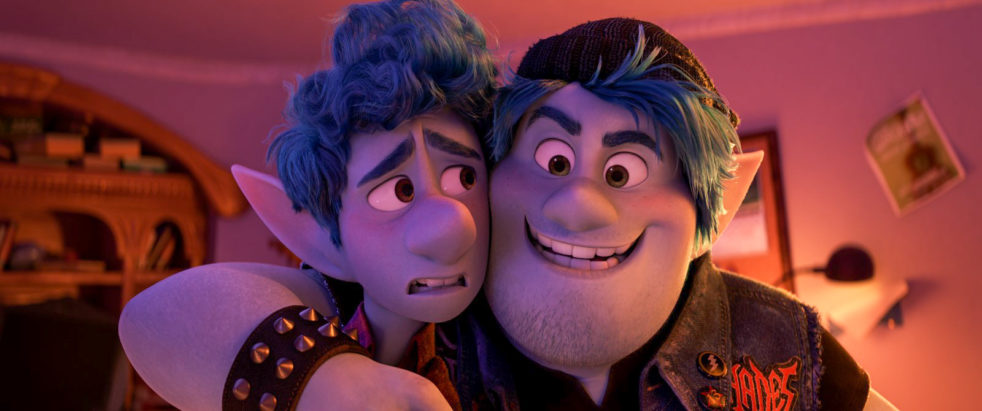Of all of the major motion picture studios, Pixar might be the most consistent supplier of quality films. The Disney-owned animation company produces a yearly stream of critically acclaimed and publicly beloved content. So how do they do it? How do they maintain such high-caliber output? Last week, Kelsey Mann offered some answers.
Mann is a veteran story artist at Pixar. Among other works, he was the story supervisor for “Monsters University” and “The Good Dinosaur.” Prior to that, he animated and wrote for Cartoon Network, Warner Bros. and Lucasfilm Animation. Now, the artist’s title has shifted to Head of Story for the upcoming release “Onward.”
On Feb. 9, he came to Tech’s campus to present to students at the Tech Square Research Building and speak with the Technique, taking students behind the scenes of Pixar and sharing some of their processes.
When asked what sets Pixar apart, he highlighted a single, shared goal: “to make a great film.” Going further, Mann added, “I think one of the major keys to our success is telling stories that are personal.”
Day one for “Onward” was Sep. 17, 2013. For the last seven years, Mann and his team of writers and story artists tirelessly labored, creating and reworking countless scenes and plotlines. What exactly does that process look like?
Mann said the story starts with oneself, which in this case was director Dan Scanlon (“Monsters University”). “Dan looked at his own life for [“Onward”],” Mann told students. “There is a thing Dan realized about his own life” that inspired the movie. However, he noted that “Onward” was not autobiographical in nature, clarifying that Dan “wanted to make sure it was universally relatable.”
While the movie might start with Scanlon, he is not alone in his efforts.
“Typically, I’ve been there the whole time like helping shape the story with [Scanlon] side by side,” Mann says. They begin by pinning ideas, scenes and plot points to the wall on index cards. Then they enlist story artists who begin to visualize these ideas.
Aside from Mann and Scanlon, there are numerous talents collaborating on this movie. Each contributor uses the story’s universality as an entryway into making a personal movie of their own. Mann explained to the Technique, “The movie is about loss and support, and so you can come to it through multiple ways. You don’t have to experience what Dan experienced, but everyone can experience loss in their life in some form … And so we’re always pulling from our own experiences and trying to put that in the film, because that’s where the real truth comes from.”
In his role, Mann was responsible for overseeing a team of writers whose goal is to tell the most compelling, entertaining story possible. He also had to make sure that everyone is performing well and that the job stayed on track. Elaborating, the head of story told the Technique, “I’m also figuring out how many scenes is it … and I start to figure out who can do what, like casting, figuring out which artist can do which scene.”
The artists are cleverly organized into what Mann termed “the fishbowl.” Sharing one big room allows each of the artists the ability to see all parts of the film while they work. Collectively, they work, draw, collaborate and analyze one page at a time.
Then, all of the writers and artists are invited to pitch their scenes and contributions in one big meeting. After each one, they applaud, discuss and receive notes. Then they rework it again.
At this point in the presentation, Mann shares a sample pitch from “Onward” with students. There are no colors, no music —only Mann and his sketch drawings are on display. He describes a good pitch as one in which the viewer watches the movie, feels for it and is entertained by it.
Once Mann and Scanlon’s teams have completed all of their work, they send it off to editing with temporary voice actors and temporary music. Then it goes to screening day, where the Braintrust — a collection of Pixar’s best and most famous filmmakers — view the product and offer their notes. Taking all of the notes, they begin this process all over again.
This repetitive operation sheds light on parts of the film that might need more attention. For example, Mann discussed the rationale that went into creating a sense of magic in “Onward.” Spells traditionally require numerous components, such as the physical motions and verbal incantations a character must perform. After a few screenings, they concluded that the magic in “Onward” also needed an emotional one.
Mann explained, “Like in order to do this trust bridge spell, you have to trust yourself, and if you don’t trust yourself, then the spell is not going to work. And suddenly, all the spells became
this growth test in Ian [the protagonist], which is fantastic because Ian is a character that wants to become more confident.” Because of this attention to story and character, the head of story said, “All of those magic spells started to feel more visceral, because you saw the character overcoming something internal, which is always so much more satisfying.”
Clearly, all of the reworking and tinkering is not simply about making a cool movie. It is rather an effort to produce a more personal, resonant story. Through this tireless, collaborative process, Mann, Scanlon and their story artists create the high quality output that fans and critics alike have come to adore from Pixar.
